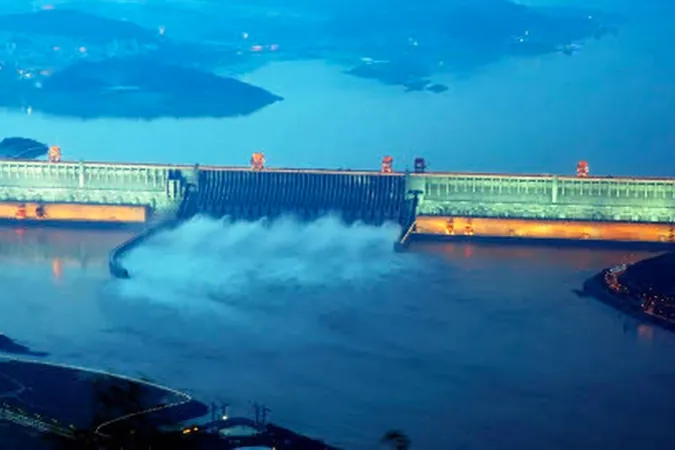
NASA Alerts: China's Three Gorges Dam Might Surprisingly Affect Earth's Rotation!
2025-01-03
Author: Kai
A Closer Look at the Three Gorges Dam
With a staggering length of 2,335 meters and a height of 185 meters, the Three Gorges Dam is the largest hydroelectric power station globally and has been operational since its completion in 2012, which took nearly 18 years to achieve. It can store an incredible 40 cubic kilometers of water, equivalent to about 40 trillion liters! This structure not only serves as a critical power generator but also plays a significant role in flood control and navigation along the river.
How Could a Dam Alter Earth's Rotation?
NASA posits that the immense weight of water stored behind the dam could potentially disrupt the rotational balance of Earth. The concept is rooted in physics, particularly the idea of mass distribution impacting the moment of inertia—essentially how mass affects a spinning object's rate and balance. Similar effects were noted after the 2004 Indian Ocean earthquake and tsunami, which shifted the Earth's mass and shortened the day by approximately 2.68 microseconds.
Dr. Benjamin Fong Chao from NASA's Goddard Space Flight Center explains that alterations in the distribution of mass, such as those from filling giant reservoirs, can lead to measurable shifts in Earth's rotational axis—potentially nudging it by roughly 2 centimeters and extending a day by around 0.06 microseconds.
Broader Implications for Our Planet
The potential impact of large structures like the Three Gorges Dam is just one facet of how human activities can interfere with Earth's natural systems. Climate change, particularly due to melting polar ice caps, is another significant factor affecting Earth's rotation. Over millennia, natural forces—such as the gravitational pull of the Moon—have been gradually slowing Earth's rotation as well.
Considering the collective worldwide effects of large hydropower projects—from Brazil to India—underscores the importance of understanding how these constructions might magnify changes in Earth's rotational dynamics. As we continue to explore sustainable development, these revelations bring crucial insights into the consequences of large-scale engineering on our planet and its ecosystems.
Can We Manage These Changes?
To address these minuscule alterations in Earth's spin, experts have proposed the implementation of “negative leap seconds,” an intriguing solution that would involve occasionally removing a second from atomic clocks to ensure they remain synchronized with Earth’s evolving pace. While this may seem trivial, it highlights the interconnectedness of human actions, technological advancements, and the planet's delicate balance.
NASA's findings on the Three Gorges Dam serve as a powerful reminder of the responsibility we bear in managing our environment. As humanity strives to build monumental projects and confront pressing climate issues, prioritizing sustainability is critical—both for protecting fragile ecosystems and for sustaining the vital processes that make life on Earth possible.
As we advance into the future, how will we balance technological progress with our planet's health? Share your thoughts and opinions!


 Brasil (PT)
Brasil (PT)
 Canada (EN)
Canada (EN)
 Chile (ES)
Chile (ES)
 Česko (CS)
Česko (CS)
 대한민국 (KO)
대한민국 (KO)
 España (ES)
España (ES)
 France (FR)
France (FR)
 Hong Kong (EN)
Hong Kong (EN)
 Italia (IT)
Italia (IT)
 日本 (JA)
日本 (JA)
 Magyarország (HU)
Magyarország (HU)
 Norge (NO)
Norge (NO)
 Polska (PL)
Polska (PL)
 Schweiz (DE)
Schweiz (DE)
 Singapore (EN)
Singapore (EN)
 Sverige (SV)
Sverige (SV)
 Suomi (FI)
Suomi (FI)
 Türkiye (TR)
Türkiye (TR)
 الإمارات العربية المتحدة (AR)
الإمارات العربية المتحدة (AR)